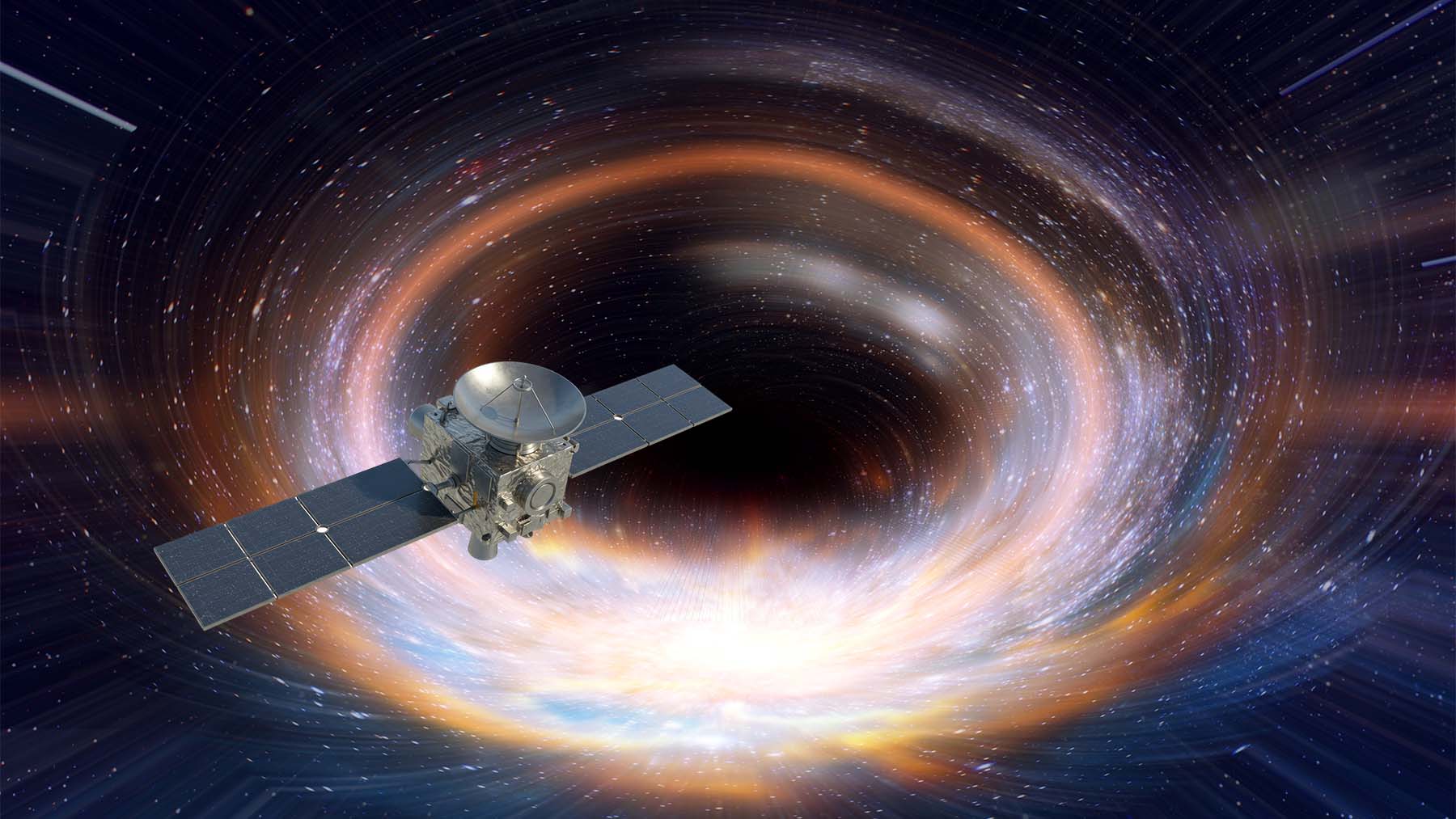At first sight, sending a spacecraft to a nearby black hole (20–25 light years) sounds like a wild fantasy. Yet the idea comes from serious science. Cosimo Bambi, astrophysicist at Universidad Fudan (China) and the University of New Uzbekistan, has outlined the concept in an iScience article.
The idea is to test general relativity where it matters most—next to a black hole. Right now we can only study these objects indirectly from Earth, through gravitational waves or blurry images of the event horizon. A spacecraft flying close to one could give us direct answers.
The concept relies on nanonaves, probes no larger than a postage stamp, equipped with a photon sail. Earth-based lasers would push them to a third of light speed, an approach already being developed by Breakthrough Starshot for interstellar travel.
If a hidden black hole lies within 20–25 light years, such probes could reach it in 60 to 75 years. Signals would take another two decades to come back. That means a mission lasting about a century—designed to outlive the people who start it.
What would we gain? The chance to check whether the Kerr metric really describes a rotating black hole, to verify if a true event horizon exists, and to see if the fine-structure constant (α) changes under extreme gravity. Each answer would push physics into new territory.
How the journey would work
Bambi’s plan feels ambitious, but it’s broken into four clear steps:
- Launch – A tiny probe with a photon sail is blasted by powerful lasers from Earth until it reaches near-light speed.
- Interstellar Cruise – The probe drifts silently for decades across the dark, covering the 20–25 light years.
- Arrival – As it nears the black hole, the probe splits in two. One stays farther out, the other dares to move closer.
- Science Phase – The two probes send signals between them, tracking how gravity bends space and time, then beam the results back home.
This isn’t just daydreaming. It connects existing ideas in space engineering with a daring long-term goal.
The most important experiments according to Bambi
So what exactly would the probes look for? Bambi lists three key experiments:
- Testing the Kerr Metric – Does spacetime around a rotating black hole behave as Einstein predicted?
- Checking the Event Horizon – Is there really a sharp edge beyond which nothing escapes, or something stranger, like the “fuzzballs” suggested in string theory?
- Measuring Constants – By comparing atomic transitions, the probes could reveal if the fine-structure constant (α) shifts in strong gravity.
Any of these discoveries would be revolutionary. Even tiny deviations could mean the laws of physics work differently than we thought.
A century-long vision
This is not a mission for our lifetime. From launch to data return, the timeline would span close to 100 years. But that doesn’t make it less meaningful. Science is full of projects that began as impossible ideas. Gravitational waves, landing on Mars, imaging a black hole were once a fantasy and each breakthrough took decades.
The technology isn’t all science fiction either. Laser propulsion, miniaturized spacecraft, and deep-space communication are already under development. This proposal ties them together in a long-term plan with a single, audacious target.
As Bambi writes, “the possibility of an interstellar mission to study a black hole is not completely unrealistic, though highly speculative and extremely challenging.” In other words, it’s a stretch—but not impossible.
More than building a probe tomorrow, the real goal is to spark a bigger conversation: how far are we willing to go to understand the universe’s strangest objects? If future generations take up the challenge, humanity’s smallest spacecraft could one day fly straight into the heart of our biggest cosmic mystery.
